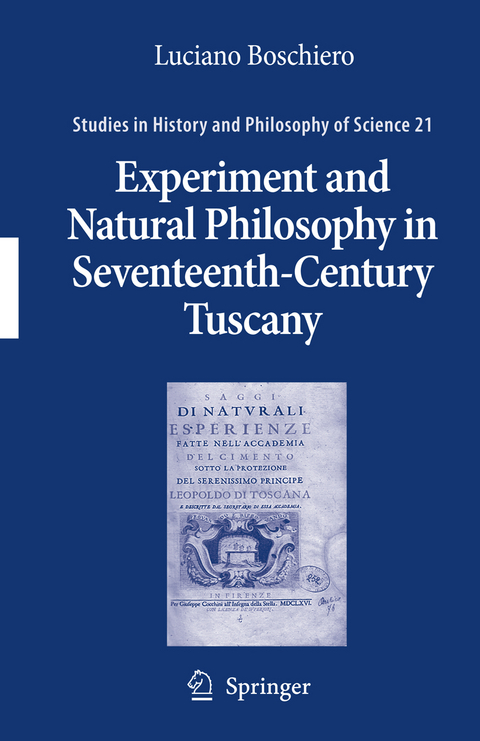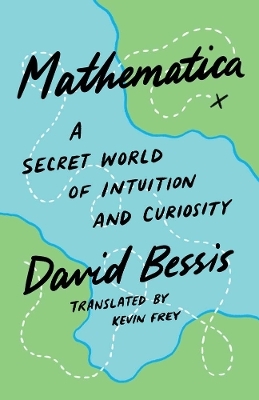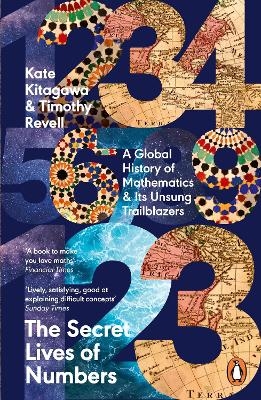
Experiment and Natural Philosophy in Seventeenth-Century Tuscany
The History of the Accademia del Cimento
Seiten
2007
|
2007 ed.
Springer-Verlag New York Inc.
978-1-4020-6245-2 (ISBN)
Springer-Verlag New York Inc.
978-1-4020-6245-2 (ISBN)
Counters historiographies that search for the origins of modern science within the experimental practices of Europe's first scientific institutions, such as the Cimento.
The aim of this book is to explore and understand the activities undertaken by the Florentine Accademia del Cimento, one of Europe’s first scientific societies. The Cimento operated for ten years, between 1657 and 1667, and during that time performed many experiments and observations in physics and astronomy, rivalling the achievements of the Royal Society of London and the Parisian Acadèmie Royale des Sciences. This book will attempt to sift through the ava- able primary evidence, as well as secondary accounts of the Cimento’s activities, in order to examine the intellectual concerns that the individual academicians acquired throughout their careers and that they pursued while carrying out and interpreting their experiments for the Cimento and the Tuscan Court. Those interests will also shed some light on the ways in which the academicians performed and used experiments. Inspired by Galileo’s success with experiments and instruments during the first half of the seventeenth century, the Cimento academicians developed an experimentalist approach to their natural inquiry that attempted to eliminate any dependence on theoretical presuppositions and preconceptions. The group’s p- ported aim was to rely solely on the senses to accumulate knowledge of nature. This experimental philosophy framed the way in which historians have since viewed the Cimento’s practices.
The aim of this book is to explore and understand the activities undertaken by the Florentine Accademia del Cimento, one of Europe’s first scientific societies. The Cimento operated for ten years, between 1657 and 1667, and during that time performed many experiments and observations in physics and astronomy, rivalling the achievements of the Royal Society of London and the Parisian Acadèmie Royale des Sciences. This book will attempt to sift through the ava- able primary evidence, as well as secondary accounts of the Cimento’s activities, in order to examine the intellectual concerns that the individual academicians acquired throughout their careers and that they pursued while carrying out and interpreting their experiments for the Cimento and the Tuscan Court. Those interests will also shed some light on the ways in which the academicians performed and used experiments. Inspired by Galileo’s success with experiments and instruments during the first half of the seventeenth century, the Cimento academicians developed an experimentalist approach to their natural inquiry that attempted to eliminate any dependence on theoretical presuppositions and preconceptions. The group’s p- ported aim was to rely solely on the senses to accumulate knowledge of nature. This experimental philosophy framed the way in which historians have since viewed the Cimento’s practices.
Galileo And Beyond.- 350 Years of coming to grips with the experimental activities of Galileo and his followers.- Vincenzio Viviani (1622–1703): Galileo's last disciple.- Giovanni Alfonso Borelli (1608–1679).- What it meant to be a Cimento academician.- The Accademia Del Cimento: 1657–1662.- Experiments concerning air pressure and the void and a look at the Accademia's internal workings.- The artificial freezing process of liquids, and the properties and effects of heat and cold.- The Accademia Del Cimento: 1662–1667.- The Cimento's publication process and presentational techniques: formulating a policy of self-censorship.- The Saturn problem and the path of comets: an analysis of the academicians' theoretical and observational Astronomy.
| Erscheint lt. Verlag | 6.9.2007 |
|---|---|
| Reihe/Serie | Studies in History and Philosophy of Science ; 21 |
| Zusatzinfo | XI, 251 p. |
| Verlagsort | New York, NY |
| Sprache | englisch |
| Maße | 155 x 235 mm |
| Themenwelt | Mathematik / Informatik ► Mathematik ► Geschichte der Mathematik |
| Naturwissenschaften | |
| ISBN-10 | 1-4020-6245-1 / 1402062451 |
| ISBN-13 | 978-1-4020-6245-2 / 9781402062452 |
| Zustand | Neuware |
| Haben Sie eine Frage zum Produkt? |
Mehr entdecken
aus dem Bereich
aus dem Bereich
a secret world of intuition and curiosity
Buch | Hardcover (2024)
Yale University Press (Verlag)
CHF 45,80
a global history of Mathematics & its Unsung Trailblazers
Buch | Softcover (2024)
Penguin Books Ltd (Verlag)
CHF 22,65
Das Jahrhundert, in dem die Mathematik sich neu erfand. 1870-1970
Buch | Hardcover (2022)
Heyne (Verlag)
CHF 30,80


